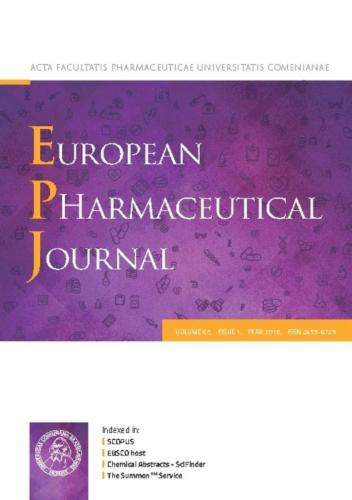Small molecule drug absorption in inflammatory bowel disease and current implementation in physiologically- based pharmacokinetic models
IF 4.3
3区 医学
Q1 PHARMACOLOGY & PHARMACY
引用次数: 0
Abstract
Inflammatory bowel disease (IBD) is characterized by a chronic inflammation of the intestinal mucosa, with predominant localization in the colon in ulcerative colitis (UC) or affecting the entire length of the gastrointestinal tract in Crohn's disease (CD). Recent advances in the drug development space have been marked by a return to orally administered small molecules with novel mechanisms of action such as Janus kinase inhibitors. Additionally, the prevalence of certain chronic conditions is higher in IBD patients, many of which are treated with orally administered drugs. Given the pathophysiology and localization of IBD, altered drug absorption from the gastrointestinal tract can be expected. This review discusses several physiological differences between the small and large intestine with the potential to influence drug absorption including pathophysiology related alterations associated with IBD. The main physiological parameters which are identified include luminal fluid volume, luminal pH, transit time, bile salt concentration, microbiome, absorptive surface area, permeability and metabolizing enzymes and transporters. Literature regarding these factors in IBD patients is marked with high heterogeneity in reporting of disease severity and location leading to difficulties in interpreting data across different studies. While the influence of most of these factors has been directly assessed in healthy volunteers, this is rarely the case for IBD patients. Furthermore, studies which used PBPK modelling to describe the PK of an orally administered drug in an IBD population and were able to verify their findings using clinical data are critically examined. These models were able to incorporate the pathophysiological changes associated with IBD and partly succeeded in adequately predicting drug absorption in this population. Given the limited amount of PBPK studies performed on a limited number of drugs, the developed models are most likely not suitable to be used as a general PBPK model for the IBD population.

炎症性肠病的小分子药物吸收和基于生理的药代动力学模型的当前实施。
炎症性肠病(IBD)以肠黏膜的慢性炎症为特征,溃疡性结肠炎(UC)主要局限于结肠,克罗恩病(CD)主要影响整个胃肠道。药物开发领域的最新进展标志着口服小分子药物的回归,这些药物具有新的作用机制,如Janus激酶抑制剂。此外,某些慢性疾病的患病率在IBD患者中较高,其中许多患者使用口服药物治疗。考虑到IBD的病理生理和定位,可以预期胃肠道药物吸收的改变。这篇综述讨论了小肠和大肠之间可能影响药物吸收的几种生理差异,包括与IBD相关的病理生理变化。确定的主要生理参数包括管腔液体积、管腔pH、传递时间、胆盐浓度、微生物群、吸收表面积、渗透性、代谢酶和转运蛋白。关于IBD患者这些因素的文献在疾病严重程度和部位的报道上存在高度异质性,导致不同研究的数据难以解释。虽然大多数这些因素的影响已在健康志愿者中直接评估,但对于IBD患者却很少如此。此外,使用PBPK模型来描述IBD人群口服药物PK的研究,并能够使用临床数据验证其发现,这些研究受到了严格的审查。这些模型能够纳入与IBD相关的病理生理变化,并部分成功地充分预测该人群的药物吸收。鉴于对有限数量药物进行的PBPK研究数量有限,所开发的模型很可能不适合作为IBD人群的一般PBPK模型。
本文章由计算机程序翻译,如有差异,请以英文原文为准。
求助全文
约1分钟内获得全文
求助全文
来源期刊
CiteScore
9.60
自引率
2.20%
发文量
248
审稿时长
50 days
期刊介绍:
The journal publishes research articles, review articles and scientific commentaries on all aspects of the pharmaceutical sciences with emphasis on conceptual novelty and scientific quality. The Editors welcome articles in this multidisciplinary field, with a focus on topics relevant for drug discovery and development.
More specifically, the Journal publishes reports on medicinal chemistry, pharmacology, drug absorption and metabolism, pharmacokinetics and pharmacodynamics, pharmaceutical and biomedical analysis, drug delivery (including gene delivery), drug targeting, pharmaceutical technology, pharmaceutical biotechnology and clinical drug evaluation. The journal will typically not give priority to manuscripts focusing primarily on organic synthesis, natural products, adaptation of analytical approaches, or discussions pertaining to drug policy making.
Scientific commentaries and review articles are generally by invitation only or by consent of the Editors. Proceedings of scientific meetings may be published as special issues or supplements to the Journal.

 求助内容:
求助内容: 应助结果提醒方式:
应助结果提醒方式:


